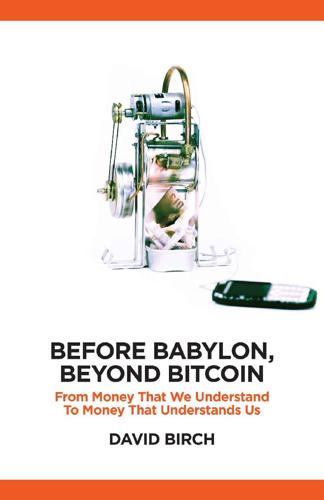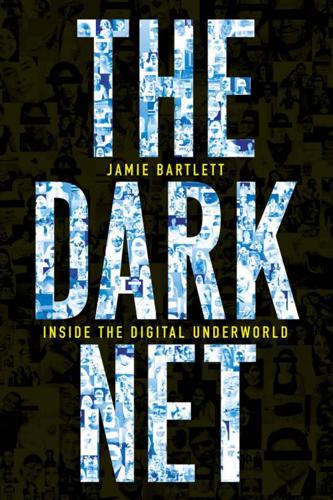Kuwabatake Sanjuro: assassination market
description: a prediction market where any party can place a bet using anonymous electronic money on the date of death of a given individual, and collect a payoff if they "guess" the date accurately
5 results

Before Babylon, Beyond Bitcoin: From Money That We Understand to Money That Understands Us (Perspectives)
by
David Birch
Published 14 Jun 2017
I suppose it was inevitable that the arrival of Bitcoin would stimulate experiments in this area, although I would have thought that Bitcoin was a poor choice for this sort of thing because, whatever the newspapers might think, Bitcoin is not terribly anonymous, as we will discuss in Chapter 13. Bitcoin transactions are public and you can track them until the end of time. Kuwabatake Sanjuro’s market is therefore unlikely to destabilize our democratic system, although it might lead to a few arrests for incitement to murder. If it were likely to destabilize our democratic system, the FBI would simply set up their own assassination market and put a few quid on Kuwabatake Sanjuro. (Come to that, how do we know that Kuwabatake Sanjuro isn’t the FBI anyway?) Transaction reporting If non-fiat electronic money did become the primary means of payment, then it would be nearly impossible to effect national economic management.
…
I don’t think that electronic money will make that much of a difference to drug dealers, for example. For my retirement plan I need to find something unique to the virtual, which is why I was sufficiently interested in the novel concept of assassination markets to write about them. I was excited to find that an enterprising chap by the name of Kuwabatake Sanjuro had taken advantage of the invention of Bitcoin to set one up (Greenberg 2013). In case you are wondering what an assassination market is, it is a prediction market where any party can place a bet (using anonymous electronic money, and pseudonymous remailers) on the date of death of a given individual and collect a payoff if they ‘guess’ the date accurately.
…
The proliferation of anonymous, web-based technologies will enable them to yield this power exponentially, creating the potential for devious criminal activity on a scale that has never before been possible. Imagine a world where dangerous minds have a public platform to solicit support from anyone with an Internet connection. Bigshot mock website (courtesy of Joe Carpita and Craig Stover). This idea of taking the assassination markets discussed in chapter 10 and opening them up through crowdsourcing encourages us to imagine new sorts of crime (and, in my opinion, new sorts of diplomacy) that we must take into consideration when trying to design the next generation of money just as much as the considerations around technology, economics and banking

Orwell Versus the Terrorists: A Digital Short
by
Jamie Bartlett
Published 12 Feb 2015
There are photographs of people I recognise – prominent politicians, mostly – and, next to each, an amount of money. The site’s creator, who uses the pseudonym Kuwabatake Sanjuro, thinks that if you could pay to have someone murdered with no chance – I mean absolutely zero chance – of being caught, you would. That’s one of the reasons why he has created the Assassination Market. There are four simple instructions listed on its front page: >Add a name to the list >Add money to the pot in the person’s name >Predict when that person will die >Correct predictions get the pot The Assassination Market can’t be found with a Google search. It sits on a hidden, encrypted part of the internet that, until recently, could only be accessed with a browser called The Onion Router, or Tor.
…
It is impossible to know the number of people who are doing exactly that, but at the time of writing, if I correctly predict the date of the death of Ben Bernanke, the former chairman of the Federal Reserve, I’d receive approximately $56,000. It may seem like a fairly pointless bet. It’s very difficult to guess when someone is going to die. That’s why the Assassination Market has a fifth instruction: >Making your prediction come true is entirely optional The Dark Net The Assassination Market is a radical example of what people can do online. Beyond the more familiar world of Google, Hotmail and Amazon lies another side to the internet: the dark net. For some, the dark net is the encrypted world of Tor Hidden Services, where users cannot be traced, and cannot be identified.
…
Nearly two decades later, with the creation of digital currencies like Bitcoin, anonymous browsers like Tor and trustworthy encryption systems, it had, and Bell’s vision was realised. ‘Killing is in most cases wrong, yes,’ Sanjuro wrote when he launched the Assassination Market in the summer of 2013: However, this is an inevitable direction in the technological evolution . . . When someone uses the law against you and/or infringes upon your rights to life, liberty, property, trade or the pursuit of happiness, you may now, in a safe manner from the comfort of your living room, lower their life-expectancy in return. There are, today, at least half a dozen names on the Assassination Market. Although it is frightening, no one, as far as I can tell, has been assassinated.

The Dark Net
by
Jamie Bartlett
Published 20 Aug 2014
There are photographs of people I recognise – prominent politicians, mostly – and, next to each, an amount of money. The site’s creator, who uses the pseudonym Kuwabatake Sanjuro, thinks that if you could pay to have someone murdered with no chance – I mean absolutely zero chance – of being caught, you would. That’s one of the reasons why he has created the Assassination Market. There are four simple instructions listed on its front page: >Add a name to the list >Add money to the pot in the person’s name >Predict when that person will die >Correct predictions get the pot The Assassination Market can’t be found with a Google search. It sits on a hidden, encrypted part of the internet that, until recently, could only be accessed with a browser called The Onion Router, or Tor.
…
It is impossible to know the number of people who are doing exactly that, but at the time of writing, if I correctly predict the date of the death of Ben Bernanke, the former chairman of the Federal Reserve, I’d receive approximately $56,000. It may seem like a fairly pointless bet. It’s very difficult to guess when someone is going to die. That’s why the Assassination Market has a fifth instruction: >Making your prediction come true is entirely optional The Dark Net The Assassination Market is a radical example of what people can do online. Beyond the more familiar world of Google, Hotmail and Amazon lies another side to the internet: the dark net. For some, the dark net is the encrypted world of Tor Hidden Services, where users cannot be traced, and cannot be identified.
…
Nearly two decades later, with the creation of digital currencies like Bitcoin, anonymous browsers like Tor and trustworthy encryption systems, it had, and Bell’s vision was realised. ‘Killing is in most cases wrong, yes,’ Sanjuro wrote when he launched the Assassination Market in the summer of 2013: However, this is an inevitable direction in the technological evolution . . . When someone uses the law against you and/or infringes upon your rights to life, liberty, property, trade or the pursuit of happiness, you may now, in a safe manner from the comfort of your living room, lower their life-expectancy in return. There are, today, at least half a dozen names on the Assassination Market. Although it is frightening, no one, as far as I can tell, has been assassinated.

The Age of Cryptocurrency: How Bitcoin and Digital Money Are Challenging the Global Economic Order
by
Paul Vigna
and
Michael J. Casey
Published 27 Jan 2015
The currency’s and its supporters’ embrace of anonymity and of the libertarian principles of freedom from central authority were almost a reincarnation of this nineties movement’s principles. Notably, it would also attract some of the dark, antisocial strains that ran through the Cypherpunks’ mailing list. In November 2013, bitcoin was featured as the in-house unit of exchange for a new, encrypted Web-site-based assassination market set up by someone under the samurai pseudonym of Kuwabatake Sanjuro. Upon its launch the public figure with the biggest bounty on his or her head was Fed chairman Ben Bernanke. But most significant, at least in retrospect, the Cypherpunks themselves were some of the earliest purveyors of cryptocurrency ideas. In the exchanges on Cypherpunk bulletin boards around that time are various references to such ideas and the occasional full-blown project.
…
“A specter is haunting the modern world, the specter of crypto-anarchy”: Tim May, “The Crypto Anarchist Manifesto,” http://www.activism.net/cypherpunk/crypto-anarchy.html. A few products were downright scary: Jim Bell, “Assassination Politics,” April 3, 1997, http://www.jrbooksonline.com/PDF_Books/AP.pdf a new, encrypted Web-site-based assassination market: Andy Greenberg, “Meet the ‘Assassination Market’ Creator Who’s Crowdfunding Murder with Bitcoins,” Forbes, November 18, 2013, http://www.forbes.com/sites/andygreenberg/2013/11/18/meet-the-assassination-market-creator-whos-crowdfunding-murder-with-bitcoins/. Six years after that first meeting of the Cypherpunks: Wei Dai, “B-Money,” posted at Wei Dai’s personal archives and http://www.weidai.com/bmoney.txt.

Future Crimes: Everything Is Connected, Everyone Is Vulnerable and What We Can Do About It
by
Marc Goodman
Published 24 Feb 2015
Finally, white wood glue was smeared onto the pattern and, when dry, could be held over the Touch ID sensor to unlock the phone. Mission accomplished. As if crowdfunding hackers weren’t serious enough, recently yet another crowdsourced enterprise surfaced in the digital underground: the Assassination Market. Regrettably, the service is not some sort of deeply disturbing joke. Rather, it is the work of a dedicated anarchist who goes by the pseudonym Kuwabatake Sanjuro. As of late 2014, eight U.S. government officials have been selected via crowdsourced voting for assassination, with the former Federal Reserve chairman Ben Bernanke receiving the greatest number of votes. Donations have been made via encrypted and untraceable online currencies, and Sanjuro has crowdfunded $75,000 for the murder of the former Fed chairman to be paid to any hit man who comes forward upon completing the act.
…
Each service has different rules and regulations. One has a strict “no minors policy” and refuses to murder children under eighteen, while another demurs when it comes to political assassinations. No worries, though, there are just as many services that are dedicated to killing government officials, such as the crowdsourced Assassination Market mentioned previously. Prices range from a low of $20,000 to more than $100,000 to kill a police officer. The sites request you provide a recent photograph of the target, as well as home and work addresses, daily routines, and frequent hangouts. Bitcoin gladly accepted, and photographic proof of murder is included standard.
…
ALAN KAY, XEROX PARC When it comes to technological threats against our security, the future has already arrived. It is sitting in an office building in Kiev, destined to be the next Innovative Marketing. It is in the laptop of that kid next to you at the library who is building the next Silk Road and Assassination Market. It’s in that ten-story government building in that foreign capital where every day thousands of digital spies are showing up at work intent on stealing your corporate secrets. It’s in the garage of that one disaffected bio-hacker who is tired of the bullying in school and now plotting his bioterror revenge.